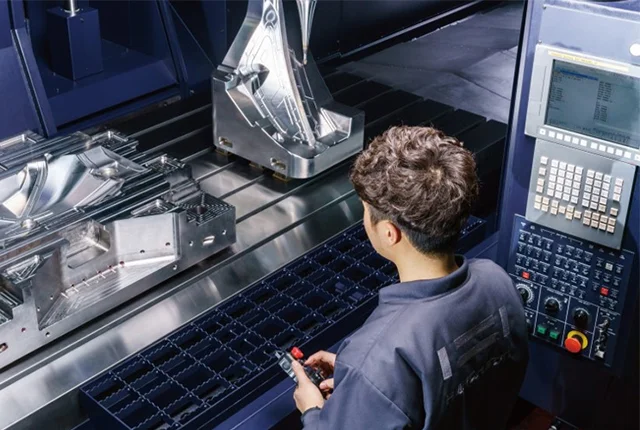Maximizing Performance and Longevity: CNC Machine Maintenance Strategies That Work

In the world of advanced manufacturing, CNC machines are the heartbeat of productivity. Whether turning out complex aerospace components or high-precision automotive parts, these machines are expected to deliver consistent performance with minimal downtime. However, their output quality and reliability are directly tied to how well they are maintained. Maintenance is no longer a reactive task—it’s a strategic investment in productivity, efficiency, and profitability. For engineering teams and procurement managers seeking long-term performance gains, adopting proven CNC machine maintenance tips is critical to staying competitive and reducing operational risk.
Understanding the Strategic Importance of CNC Maintenance
CNC machinery is not only capital-intensive, but also central to maintaining production schedules and quality standards. When a spindle fails or coolant systems malfunction, it’s not just a technical hiccup—it’s a cost-intensive disruption.
1. The Cost of Neglect: Downtime and Defects
Unplanned downtime is one of the most expensive issues manufacturers face. Even a few hours of idle time can result in significant losses due to missed deadlines, scrapped parts, and dissatisfied customers. Over time, inadequate maintenance can accelerate machine wear, reduce accuracy, and introduce costly defects into parts that may only be discovered after delivery. This is especially risky for OEMs and startups operating under tight tolerance specifications.
Furthermore, defective parts not only result in rework and material waste, but they can also harm a company’s reputation. Preventive maintenance directly impacts machine accuracy, repeatability, and cycle time—all factors tied to client satisfaction and process reliability.
2. Predictive vs. Preventive Maintenance Approaches
While preventive maintenance relies on scheduled inspections, lubrication, and replacement of wear items, predictive maintenance uses real-time data to anticipate issues before they result in failure. Both approaches play a role in a strong maintenance program, and increasingly, manufacturers are integrating smart sensors and IoT systems to track vibration, temperature, and motor performance.
Even without advanced systems, a standardized checklist for weekly, monthly, and quarterly inspections can drastically reduce risks. Shops that build this discipline into their operations often see improved tooling life, fewer sudden stoppages, and higher overall equipment effectiveness (OEE).
Practical CNC Machine Maintenance Tips for Everyday Operations
Small efforts performed consistently often have the biggest impact on long-term performance. From spindle health to environmental controls, these maintenance habits help extend the life and reliability of CNC machines.
1. Daily Cleaning and Fluid Checks
At the start and end of each shift, operators should clean chips from the machine bed, tool changer, and coolant nozzles. Chip buildup can obstruct coolant flow and cause heat-related wear on tooling and parts. Coolant levels and concentration should be checked regularly to ensure proper lubrication and heat dissipation.
Inspect for any leaks around hydraulic or pneumatic lines, and confirm that oil levels are within the recommended range. Dirty or insufficient fluids can drastically reduce machine accuracy and damage sensitive components like ball screws and linear guides.
2. Spindle and Tool Holder Maintenance
The spindle is one of the most expensive and sensitive components in a CNC machine. Using worn-out tool holders or allowing contaminants into the spindle taper can cause imbalance, vibration, and premature bearing failure. A simple habit of cleaning tool holders with lint-free cloths and checking for runout using a dial indicator can help avoid expensive repairs.
Make it standard practice to inspect drawbar tension and lubricate the spindle bearings as recommended by the OEM. Precision demands consistency, and a healthy spindle directly influences tolerances on critical parts.
Establishing a Culture of Preventive Maintenance
Even the best maintenance schedule will fail if there is no commitment across teams. Creating a strong maintenance culture starts with training, documentation, and accountability.
1. Operator Training and Checklists
Operators are the first line of defense against machine issues. Ensuring they are trained not only to run the equipment, but also to identify early warning signs of trouble, is essential. Standardized checklists for shift start-up, shutdown, and weekly inspections improve visibility and reduce human error. These should include notes on tool wear, unusual noises, temperature deviations, and alignment issues.
Regular training sessions, especially when new equipment is installed, help reinforce best practices and reduce knowledge gaps caused by staff turnover or departmental silos.
2. Maintenance Logs and Data Tracking
Keeping a detailed maintenance log allows teams to spot recurring issues and identify patterns related to tool changes, material types, or environmental conditions. Modern machine tools often include built-in diagnostics and usage counters. Leveraging this data can support smarter planning for part replacement, service intervals, and capital investment.
When maintenance tasks are documented and visible to both management and shop floor teams, it fosters a shared sense of responsibility and allows for quick action when anomalies arise.
Conclusion
Maintaining CNC machines is more than just tightening bolts and topping off coolant. It’s a strategic practice that supports performance, reduces downtime, and protects capital investment. A proactive maintenance program empowers manufacturers to uphold tolerances, meet deadlines, and extend the lifespan of their equipment. By following structured practices, supported by tools like CNC machine maintenance tips from trusted experts, shops can operate more efficiently and deliver higher value to customers across industries.





